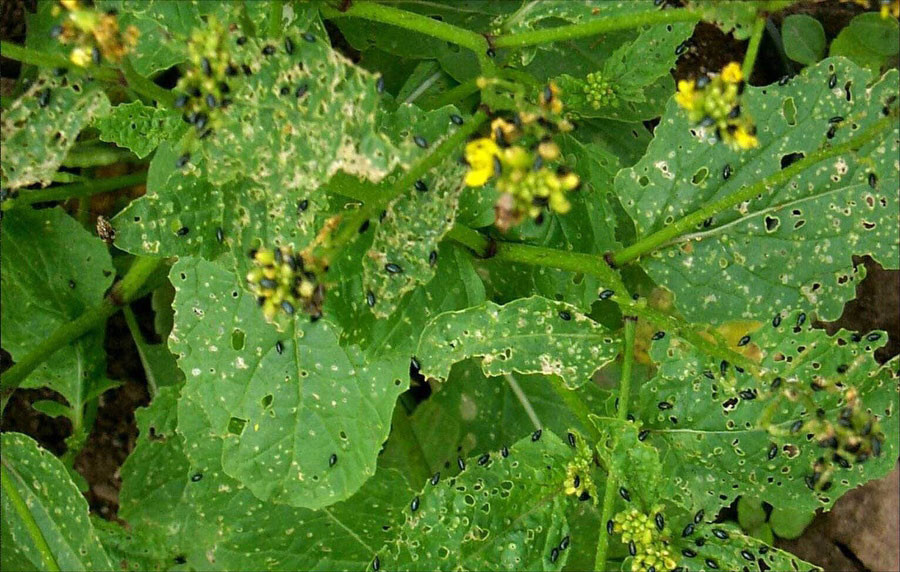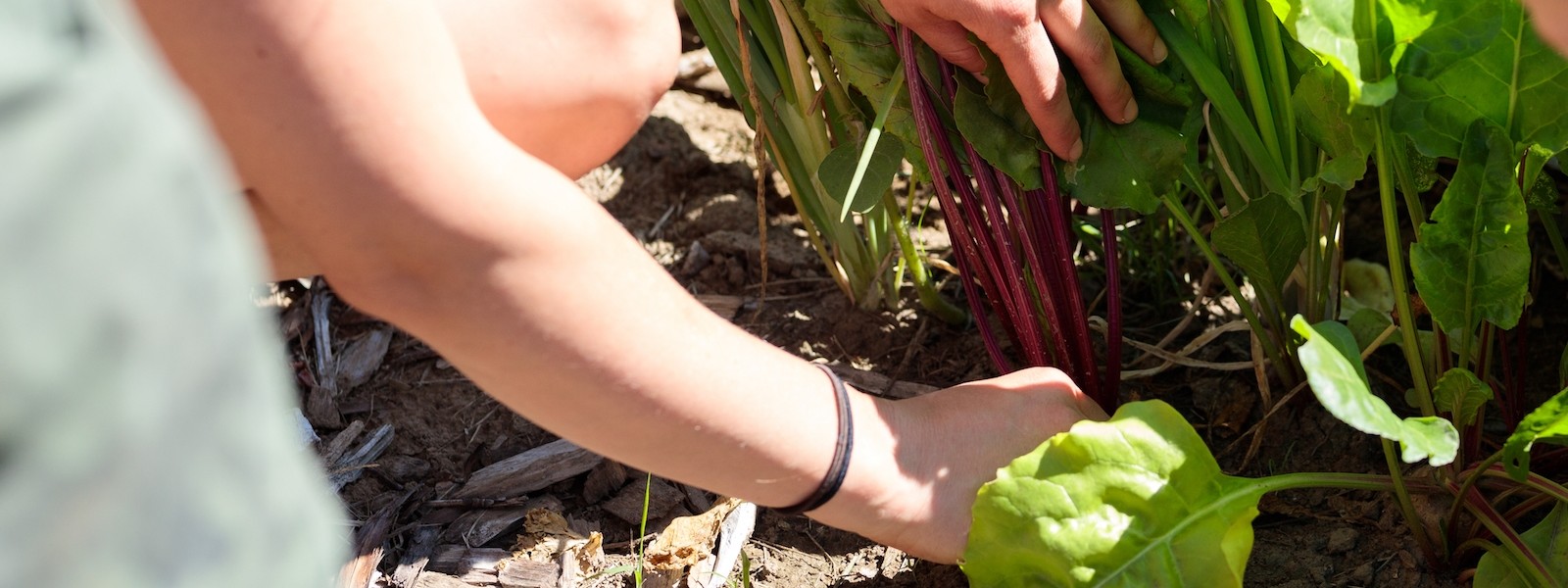Pest: Flea Beetles
Flea Beetles are tiny little shiny, black beetle that hop away when you approach plants. They will turn your greens in to lace! Their damage is especially difficult for tender young plants to recover from, and so prevention is the best medicine for keeping the damage in check.
Flea beetles are very small members of the beetle family and they hop like a f!ea. About 1/10” long, they are generally shiny black but can also be brown or bronze.

Life Cycle
Overwintering adults emerge from soil in spring. They feed and lay eggs on plant roots, then die by early July. Eggs hatch in 1 week, larvae feed 2-3 weeks, then pupate in soil; adults emerge in 2-3 weeks. There may be 1-4 generations per year.
Plants they Attack
Hosts include Brassicas (cabbage, kale, broccoli, bok choi, etc), corn, eggplant, pepper, potatoes, radish, tomato and turnips.
Spot the Damage
Adults feed on both sides of leaves or along stems. Leaves will have lots of small, round, ragged holes. They prefer the foliage of tender young vegetable seedlings. The most severe damage is seen in early to mid-growing season. Adults may spread viral diseases as they feed.
Preventative Actions
- Clear your garden of debris at the end of every season, as adults overwinter in weeds and garden-debris and feed on them until spring crops are planted.
- Dislodge the eggs. Flea beetle eggs are laid in the top 1/2” of soil near the base of host plants, so frequent shallow cultivation may expose them to predator insects who will happily eat them.
- Choose resistant plant varieties and boost plant wellness by adding ample organic matter to the soil. Healthy plants are better able to fend off attacks.
- Cover tender seedlings with a floating row cover to keep the beetles off. Be sure to seal the sides to keep them completely out. Learn more about using floating row cover.
- Interplant crops to provide shade for susceptible crops because the beetles prefer full sun.
- Companion plant using garlic, catnip, mint, or wormwood.
- Plan to rotate your crops from year to year so you do not plant their favorite foods where they laid eggs in the soil last year.
- Release parasitic nematodes to control larvae.
Organic Product Controls
Use neem or pyrethrin.
Sources
CCF staff
Good Bug, Bad Bug by Walliser 2008
The Organic Gardener’s Handbook by Ellis and Bradley 1996
Interested in learning more? The Grower’s Library at Johnny’s Selected Seeds may have the information you’re looking for.

